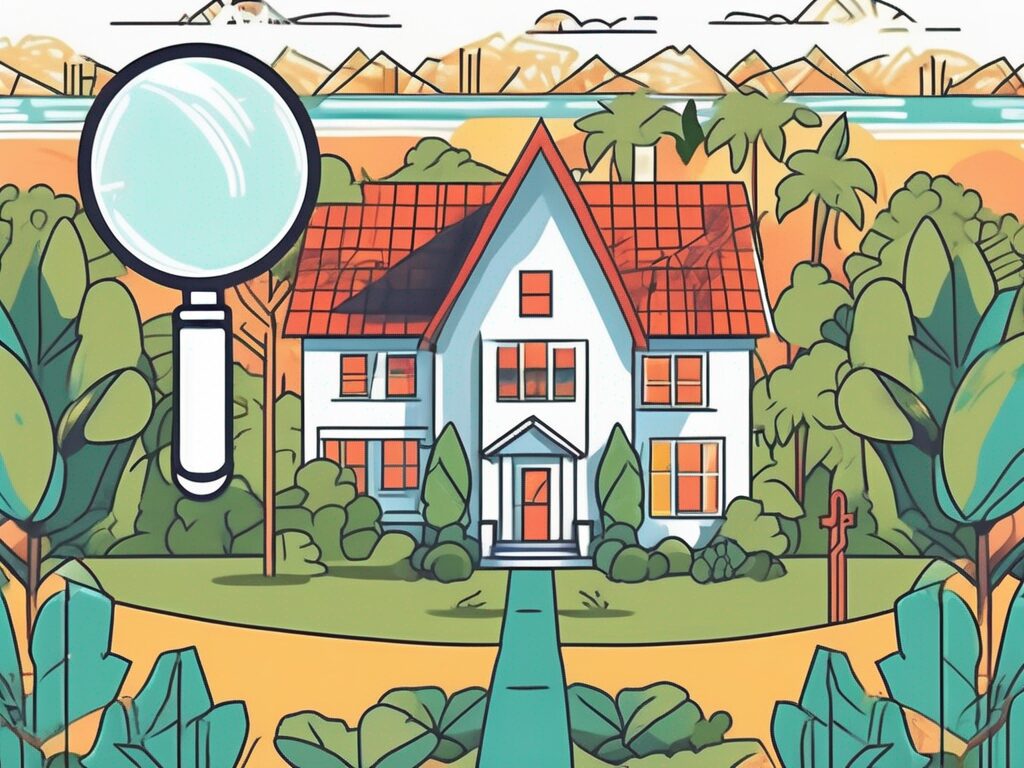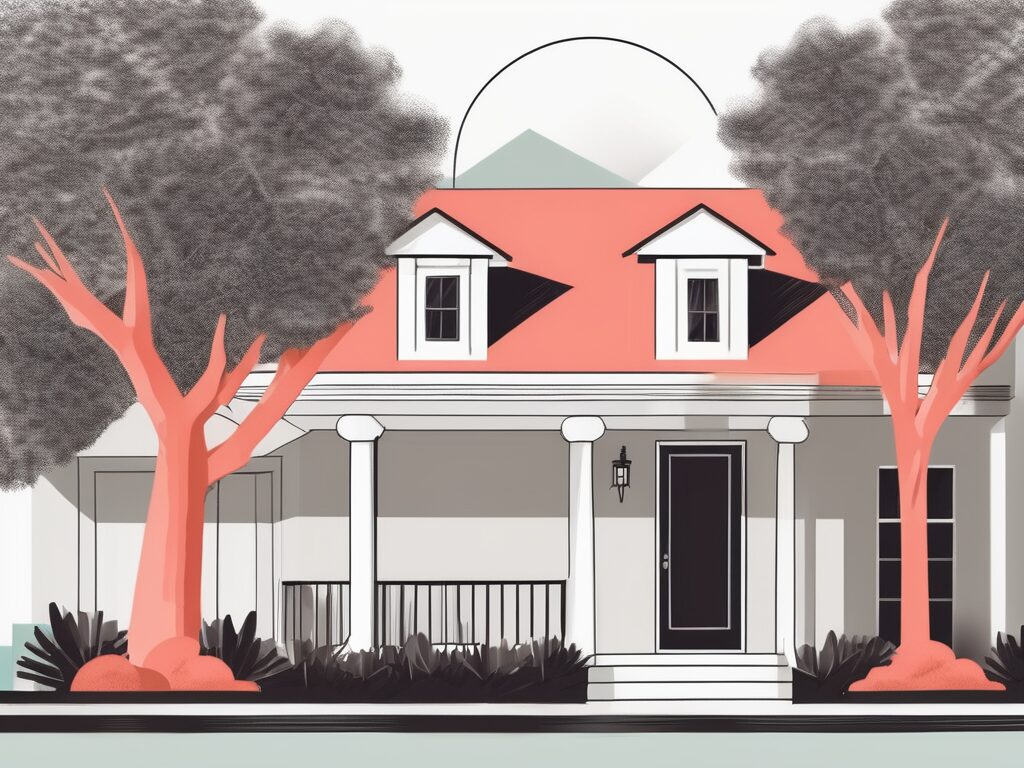
Agent A-Team or Solo Superhero? Finding the Right Real Estate Partner for Your Selling Journey in Wildwood Florida
When it comes to selling your home in Wildwood, Florida,…
January 29, 2024
The real estate market is a complex and ever-changing landscape, influenced by numerous factors. One of the most significant factors that can have a substantial impact on home sales is mortgage rates. For potential buyers, understanding the connection between mortgage rates and home sales is crucial to making informed decisions. In this article, we will explore the basics of mortgage rates, discuss the relationship between mortgage rates and home sales, analyze the impact of mortgage rates on the Coral Gables real estate market, and provide strategies for navigating mortgage rates in Coral Gables.
Before delving into the impact of mortgage rates on home sales, let’s first understand what mortgage rates are. Mortgage rates refer to the interest rates charged by lenders on mortgage loans. These rates determine the cost of borrowing and have a direct influence on the monthly mortgage payment and overall affordability of a home.
Mortgage rates are the interest rates that lenders charge borrowers for home loans. These rates are determined by various factors, such as economic conditions, inflation, and the overall health of the housing market. The rates can fluctuate daily or even multiple times a day, depending on market conditions.
Several factors contribute to the determination of mortgage rates. The most influential factors include the current state of the economy, inflation, the Federal Reserve’s monetary policy, housing market conditions, and the borrower’s creditworthiness. Understanding these factors can help potential buyers gauge the direction in which mortgage rates may move and make informed decisions.
The current state of the economy plays a significant role in determining mortgage rates. When the economy is strong, with low unemployment rates and robust economic growth, lenders may increase mortgage rates to mitigate the risk of inflation. Conversely, during economic downturns, lenders may lower mortgage rates to stimulate borrowing and boost the housing market.
Inflation is another crucial factor that affects mortgage rates. When inflation is high, lenders may increase mortgage rates to compensate for the eroding value of money over time. On the other hand, when inflation is low, lenders may offer lower mortgage rates to attract borrowers and stimulate economic activity.
The Federal Reserve’s monetary policy also has a direct impact on mortgage rates. The Federal Reserve sets the benchmark interest rate, known as the federal funds rate, which influences short-term interest rates, including mortgage rates. When the Federal Reserve raises the federal funds rate, mortgage rates tend to increase, and vice versa.
Housing market conditions are closely monitored by lenders when determining mortgage rates. If the housing market is experiencing high demand and low inventory, lenders may increase mortgage rates to control demand and prevent a housing bubble. Conversely, in a buyer’s market with low demand and ample inventory, lenders may lower mortgage rates to attract borrowers and stimulate home sales.
Borrower’s creditworthiness is also a significant factor in determining mortgage rates. Lenders assess a borrower’s credit score, income stability, debt-to-income ratio, and down payment amount to determine the level of risk associated with lending. Borrowers with higher credit scores and lower debt-to-income ratios are considered less risky and may qualify for lower mortgage rates.
By understanding these factors, potential homebuyers can make informed decisions about when to enter the housing market and secure a mortgage. Monitoring economic indicators, inflation rates, and the Federal Reserve’s monetary policy can provide valuable insights into the direction of mortgage rates. Additionally, maintaining a good credit score and managing debt responsibly can help borrowers qualify for more favorable mortgage rates.
Now that we have a grasp of the basics, let’s examine the correlation between mortgage rates and home sales. Mortgage rates play a significant role in influencing a buyer’s decision to purchase a home. Two key aspects related to mortgage rates and home sales are how mortgage rates affect a buyer’s decision and the role of mortgage rates in home affordability.
Mortgage rates directly impact a buyer’s purchasing power. When mortgage rates are low, buyers can afford more expensive homes and secure lower monthly mortgage payments. This increased purchasing power can lead to a higher demand for homes, as buyers are more willing and able to make a purchase. On the other hand, when rates rise, buyers may have to lower their budget or settle for less desirable properties. The fluctuation in mortgage rates can significantly influence a buyer’s decision-making process.
For example, let’s consider a hypothetical scenario. Sarah, a potential homebuyer, has been searching for her dream home. She has a budget of $300,000 and has been pre-approved for a mortgage. With the current low mortgage rates, Sarah can afford a home worth $350,000, allowing her to explore a wider range of options. However, if mortgage rates were to increase, Sarah’s purchasing power would decrease, and she might have to settle for a less expensive home or compromise on certain features she desires.
Home affordability is a critical consideration for buyers. Mortgage rates are a crucial factor in determining the affordability of a home. Lower rates make homes more affordable, as buyers can secure lower monthly mortgage payments. This affordability factor can attract more buyers to the market and stimulate home sales.
Let’s take a closer look at how mortgage rates impact home affordability. Suppose John is looking to buy his first home. He has a stable income and has saved up for a down payment. With the current low mortgage rates, John can afford a monthly mortgage payment of $1,500. This allows him to comfortably purchase a home worth $300,000. However, if mortgage rates were to increase, John’s monthly mortgage payment would also increase, affecting his affordability. He might have to reconsider his budget or explore other financing options to make homeownership more feasible.
Furthermore, high mortgage rates reduce affordability, making it more challenging for buyers to enter the market or secure financing for their desired properties. This can lead to a decrease in home sales, as potential buyers may delay their purchasing decisions or opt to rent instead.
In conclusion, the connection between mortgage rates and home sales is undeniable. Mortgage rates directly impact a buyer’s decision-making process and play a crucial role in determining the affordability of a home. As mortgage rates fluctuate, buyers must carefully consider their purchasing power and affordability to make informed decisions. Additionally, the real estate market as a whole can experience shifts in demand and sales volume based on changes in mortgage rates.
Now that we have explored the relationship between mortgage rates and home sales, let’s shift our focus to the real estate market in Coral Gables. Understanding the local market trends is essential for both buyers and sellers, as it provides valuable insights into the current dynamics and potential opportunities.
Coral Gables is a vibrant and sought-after neighborhood with a thriving real estate market. The city boasts architectural treasures, lush greenery, and proximity to major business centers. The real estate market in Coral Gables has experienced steady growth in recent years, driven by a combination of local demand and interest from international buyers.
One of the key factors contributing to the attractiveness of Coral Gables’ real estate market is its unique architectural style. The city is known for its Mediterranean Revival and Spanish Colonial Revival homes, which add a touch of elegance and charm to the neighborhood. These architectural gems, combined with the city’s strict zoning regulations, have helped maintain the area’s character and desirability.
Furthermore, Coral Gables offers a wide range of amenities and attractions for residents. The city is home to numerous parks, golf courses, and recreational facilities, providing ample opportunities for outdoor activities. Additionally, Coral Gables has a thriving arts and culture scene, with art galleries, theaters, and museums scattered throughout the area. This vibrant cultural landscape adds to the overall appeal of the neighborhood, making it an attractive destination for homebuyers.
Examining the trends in home sales can provide valuable insights into the overall market conditions. In recent years, Coral Gables has witnessed an increase in home sales, with a rise in both buyer interest and the number of properties sold. The market has been competitive, with multiple offers on desirable properties and a higher percentage of homes selling at or above asking prices.
One of the driving factors behind the surge in home sales is the strong demand from both local and international buyers. Coral Gables’ reputation as a desirable place to live, coupled with its convenient location and high-quality amenities, has attracted buyers from all over the world. International buyers, in particular, have shown a keen interest in Coral Gables’ real estate market, seeking to invest in properties that offer both luxury and long-term value.
Another contributing factor to the increase in home sales is the city’s strong economy. Coral Gables is home to a thriving business community, with numerous companies and organizations operating in the area. This has created a steady stream of job opportunities, attracting professionals and families who are looking to settle down in a stable and prosperous environment.
Furthermore, the low mortgage rates in recent years have made homeownership more affordable for many buyers. With favorable interest rates, more individuals and families have been able to enter the real estate market, driving up demand and contributing to the overall growth of the Coral Gables market.
In conclusion, the real estate market in Coral Gables is thriving, with steady growth in home sales and a strong demand from both local and international buyers. The city’s unique architectural style, abundance of amenities, and strong economy make it an attractive destination for those looking to invest in a vibrant and desirable neighborhood.
Now that we have an understanding of mortgage rates and the local real estate market, let’s dive deeper into analyzing the impact of mortgage rates on home sales in Coral Gables. By examining historical data and predicting future trends, we can gain valuable insights into how mortgage rates shape the local housing market.
When we delve into the historical data, a compelling link between mortgage rates and home sales in Coral Gables emerges. During periods of low mortgage rates, such as the prolonged period of historically low rates in recent years, home sales experienced a significant surge. Buyers were enticed by the attractive rates and seized the opportunity to enter the market or upgrade to larger homes.
For instance, in the aftermath of the 2008 financial crisis, the Federal Reserve implemented measures to stimulate the economy, resulting in historically low mortgage rates. This led to a surge in home sales in Coral Gables, as buyers were able to secure favorable financing terms, making homeownership more accessible and appealing.
Furthermore, during periods of low mortgage rates, not only did the number of home sales increase, but the prices of homes also saw an upward trajectory. With more buyers entering the market, demand outpaced supply, leading to bidding wars and driving up home prices. This phenomenon created a favorable environment for sellers, as they were able to sell their properties at higher prices and capitalize on the increased demand.
While predicting future home sales with absolute certainty is impossible, analyzing the relationship between mortgage rates and home sales can offer valuable insights. As mortgage rates continue to be a significant driver of buyer demand, it is essential to closely monitor rate trends and anticipate their impact on future home sales in Coral Gables.
One way to predict future home sales is by examining the Federal Reserve’s monetary policy decisions. The Federal Reserve has the power to influence mortgage rates through its control over the federal funds rate, which is the interest rate at which banks lend money to each other overnight. By adjusting this rate, the Federal Reserve can indirectly influence mortgage rates.
Additionally, economic indicators such as inflation, employment rates, and consumer confidence can provide valuable insights into future mortgage rate trends. For example, if inflationary pressures are expected to rise, the Federal Reserve may respond by increasing interest rates, which could lead to higher mortgage rates. This, in turn, could potentially dampen buyer demand and impact home sales in Coral Gables.
Another factor to consider when predicting future home sales is the demographic and socioeconomic makeup of potential buyers. For instance, if there is a significant influx of young professionals or families into Coral Gables, the demand for housing may increase, regardless of mortgage rates. These buyers may be more focused on factors such as proximity to schools, amenities, and job opportunities rather than solely relying on mortgage rates.
In conclusion, analyzing the impact of mortgage rates on home sales in Coral Gables requires a comprehensive examination of historical data, monitoring of rate trends, and consideration of various economic and demographic factors. By understanding these dynamics, we can gain valuable insights into how mortgage rates shape the local housing market and make informed predictions about future home sales.
If you are considering buying or selling a home in Coral Gables, it is crucial to navigate mortgage rates effectively. Here are some strategies that can help both buyers and sellers make informed decisions in a dynamic market.
For potential buyers, staying informed about mortgage rates is essential. Monitoring rate trends, working with reputable lenders, and getting pre-approved for a mortgage can improve your chances of securing favorable terms. Additionally, being prepared to act quickly in a competitive market is crucial.
When it comes to monitoring rate trends, it’s important to keep an eye on economic indicators that can influence mortgage rates. Factors such as inflation, job market conditions, and the overall state of the economy can all impact interest rates. By staying informed about these factors, buyers can anticipate potential changes in mortgage rates and make more informed decisions about when to lock in a rate.
Working with reputable lenders is another key strategy for home buyers. It’s important to research and compare different lenders to find one that offers competitive rates and favorable terms. Reading reviews, seeking recommendations from trusted sources, and conducting interviews with potential lenders can help buyers find a lender that meets their needs.
Getting pre-approved for a mortgage is an important step in the home buying process. This involves submitting a mortgage application and providing the necessary documentation to a lender who will evaluate your financial situation and determine how much they are willing to lend you. By getting pre-approved, buyers can have a better understanding of their budget and be in a stronger position to make offers on properties.
Finally, in a competitive market like Coral Gables, being prepared to act quickly is crucial. This means having all necessary documents and paperwork ready, having a clear understanding of your budget and priorities, and being ready to make an offer as soon as you find the right property. By being proactive and prepared, buyers can increase their chances of securing their desired home.
Real estate agents and sellers should closely follow mortgage rate trends and leverage them as selling points. When rates are low, highlighting the affordability and potential savings can attract more buyers. Moreover, staying knowledgeable about current market conditions and adjusting pricing strategies accordingly can optimize the sales process.
Real estate agents can play a crucial role in helping sellers navigate the impact of mortgage rates on their home sale. By staying informed about current rates and market trends, agents can advise sellers on the best pricing strategies to attract buyers. For example, when rates are low, agents can recommend pricing the property competitively to take advantage of the increased affordability for buyers.
Additionally, agents can work with sellers to highlight the potential savings that buyers can enjoy when mortgage rates are low. By showcasing the long-term financial benefits of purchasing a home at a time when rates are favorable, agents can help sellers attract more interested buyers.
Understanding the impact of mortgage rates on home sales in Coral Gables is vital for all parties involved in the real estate market. By grasping the connection between mortgage rates and home sales, analyzing historical data, and navigating mortgage rates effectively, buyers and sellers can make informed decisions and seize opportunities in this dynamic market. So, whether you are a prospective buyer, a seller, or a real estate professional, keep an eye on mortgage rates as they continue to shape the landscape of home sales in Coral Gables.

If you want the Richr team to help you save thousands on your home just book a call.
 Book a call
Book a call